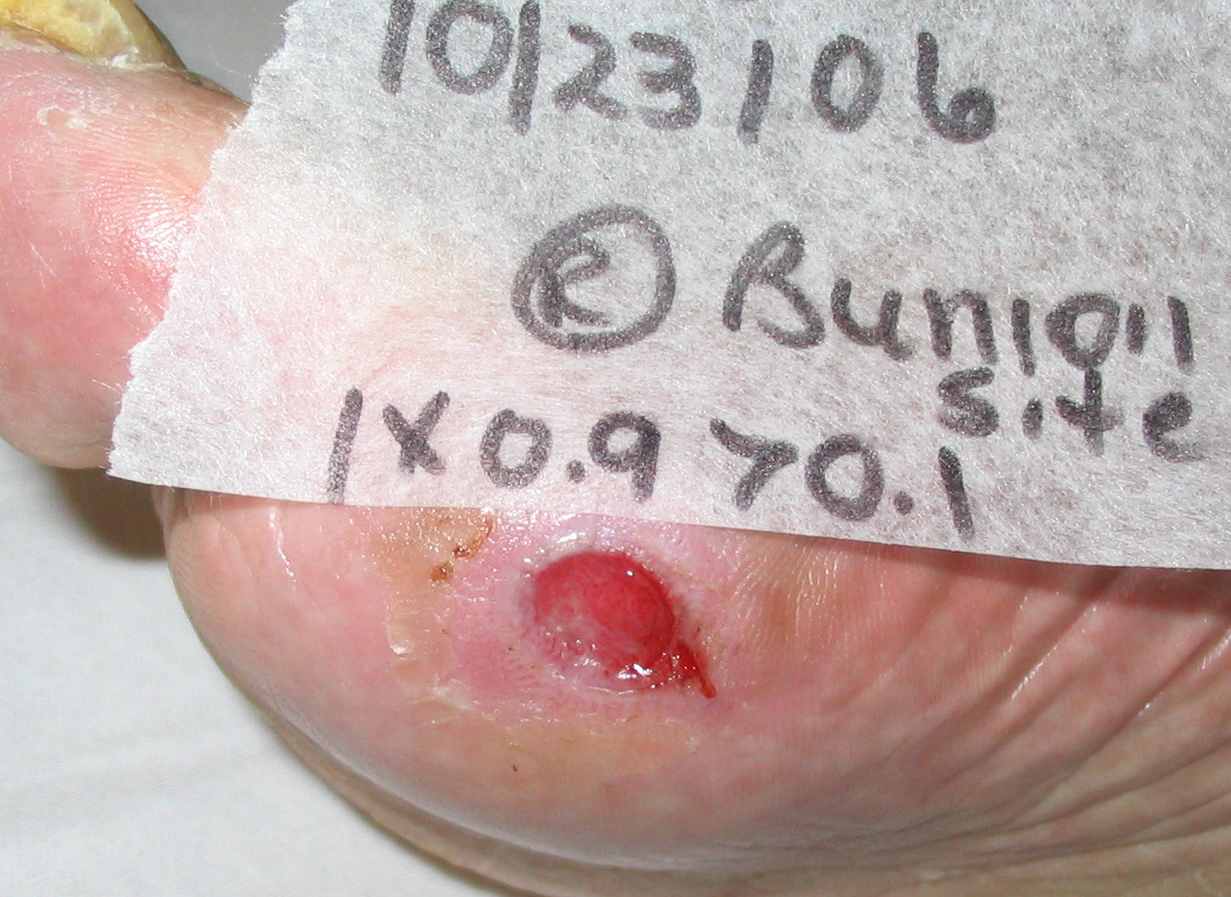PROBLEM A 68-year-old male long term care resident with controlled diabetes mellitus type 2, severe contractures of upper and lower extremities, a seizure disorder, peripheral neuropathy, dysphagia, CVA with left hemiparesis, Norton Scale of 6, and bowel and bladder incontinence developed a recurring partial thickness neuropathic ulcer of right bunion. Treatment for two months consisted of cleansing with normal saline and applying a standard foam dressing every three days and as needed. Foot was elevated and off-loaded. Healing progressed slowly and then stalled with <0.1cm deep wound measuring 1.0cm long x 0.9cm wide. RATIONALE Polymeric membrane dressings contain a gentle cleanser, so no manual wound cleansing is usually needed, allowing for less disruption of the new growth at the wound bed and very quick and easy dressing changes. Due to the patient's diabetes and co-morbidities, infection was a serious concern. Silver polymeric membrane dressings have been tested and found to be effective against most wound pathogens. Also, since silver in other forms inhibits inflammation, and an extended inflammatory phase is thought to be a factor in stalled wounds, it was hypothesized that silver dressings may “jump-start” stalled wounds. Therefore, silver polymeric membrane dressings were initiated.
METHODOLOGY After initial saline flush, silver polymeric membrane dressings applied to facilitate granulation. Dressings reinforced with cloth stretch tape. Per the manufacturer's recommendation, no wound cleansing was done during dressing changes, which took place every three days.
RESULTS Major improvement seen within first 7 days. At ten days, 0.8cm x 0.8cm with 80% granulation tissue with remaining 20% epithelialization. After only fifteen days of treatment, wound almost closed. Case is ongoing.
CONCLUSION Through use of silver polymeric membrane dressings, this wound quickly changed from stalled to granulating.
*PolyMem® SilverTM Wound Dressings, Ferris Mfg. Corp., Burr Ridge, IL 60527


